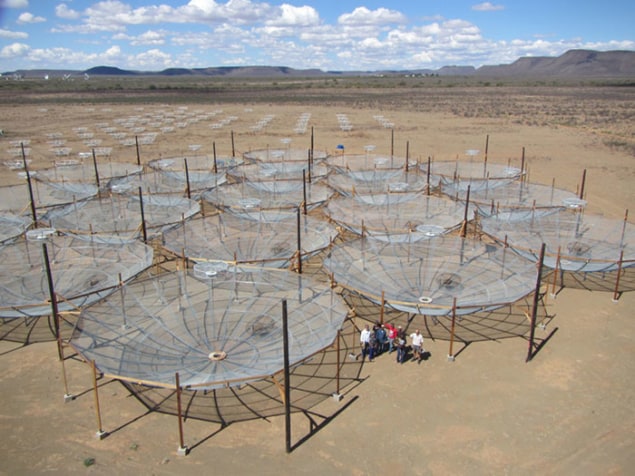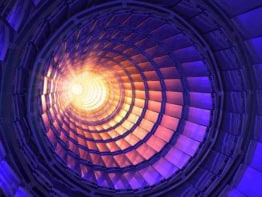Flash Physics is our daily pick of the latest need-to-know developments from the global physics community selected by Physics World‘s team of editors and reporters

Cash boost for South African radio telescope
The Hydrogen Epoch of Reionization Array (HERA) observatory, located in Losberg near Carnarvon in South Africa, has received a $9.5m funding boost that will see it vastly increase its number of 14 m radio dishes. HERA currently has 19 dishes – a number that will soon increase to 37. Yet the new cash will increase that to 220 dishes by 2018. The rise in the number of dishes will allow astronomers to explore the large-scale structures that formed during and prior to the epoch of reionization – a billion-year period after hydrogen collapsed into the first galaxies, a few hundred million years after the Big Bang. The University of California, Berkeley, leads the experiment together with institutions in Italy, South Africa, the UK and the US. HERA is a precursor array to the upcoming Square Kilometre Array that will be built in southern Africa and Australasia in the coming decade.
Decay of nature’s rarest isotope eludes physicists
An attempt to measure the decay rate of tantalum-180m at the HADES underground lab in Belgium has come up empty handed. Tantalum-180m comprises 0.01% of naturally occurring tantalum, making it the rarest known natural isotope. The “m” denotes that the isotope is a metastable state, which means that its nucleons exist in an excited state. Tantalum-180m is also exceptional because it has the longest known lifetime of a metastable nucleus. Indeed, the lifetime is so long that physicists have yet to actually see it decay. In this latest attempt Björn Lehnert and colleagues at Technical University Dresden in Germany and the Joint Research Centre in Geel, Belgium placed samples of high-purity tantalum – with natural isotopic abundances – in the Sandwich detector system located 225 m underground where background radiation levels are very low. Sandwich comprises two high-purity germanium radiation detectors. After 176 days of measurement, the team saw no evidence for the decay of tantalum-180m. When combined with previous measurements, the team was able to place a new lower limit on the half-life of the isotope of 4.5 × 1016 years. The research is described in a preprint on arXiv.
Putting the pressure on iron

Iron transforms in strange and unexpected ways when put under pressure, according to the latest work done by physicists at the Lawrence Livermore National Laboratory. The team studied iron under dynamic compression and found that iron crystals are deformed while compressed but then spring back into shape when the pressure is removed. In the work, described in Physical Review Letters, the team outlines first-principle calculations on two solid phases of iron, as well as on intermediate crystal structures along the transformation path from one phase to the other. “This reversible transformation is reminiscent of what happens in a shape-memory alloy. Such materials can change linear dimensions by almost 10% and then reversibly change back,” says team-leader Michael Surh. “It turns out that the different (fast versus slow, reversible versus irreversible) behaviour seen in iron depends on its changing magnetism.”
A third of humanity cannot see the Milky Way

Do you live in a city or any relatively large metropolitan area? If so, then can you remember the last time you have seen our Milky Way galaxy in the sky? If your answer is “never” then you can be sure to blame the growing number of artificial lights that have severely increased the amount of light in the night sky, creating an artificial skyglow. So says Fabio Falchi and a team of researchers at the Light Pollution Science and Technology Institute in Thiene, Italy, who have created detailed maps of the light pollution seen across the globe today. “Despite the increasing interest among scientists in fields such as ecology, astronomy, health care and land-use planning, light pollution lacks a current quantification of its magnitude on a global scale,” writes the team in a paper recently uploaded to the arXiv server. The researchers used their light-pollution propagation software to come up with a “world atlas of artificial sky luminance” – their atlas shows that more than 80% of the world and more than 99% of people in the US and Europe live under light-polluted skies.
- You can find all our daily Flash Physics posts in the website’s news section, as well as on Twitter and Facebook using #FlashPhysics. Tune in to physicsworld.com later today to read today’s extensive news story on isotope production stopping at Canada’s NRU reactor.



